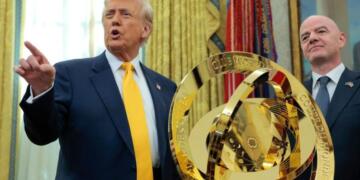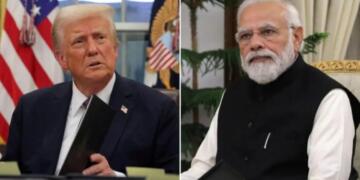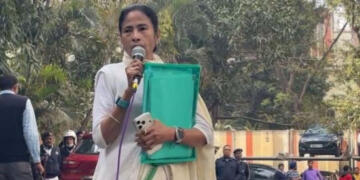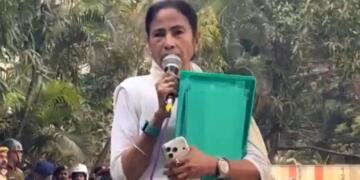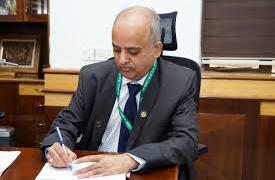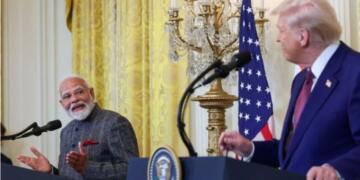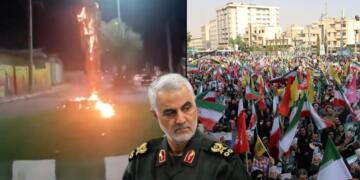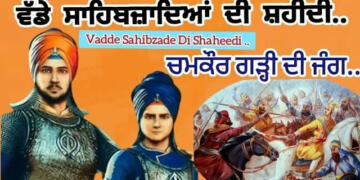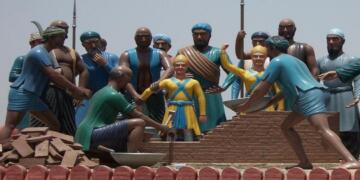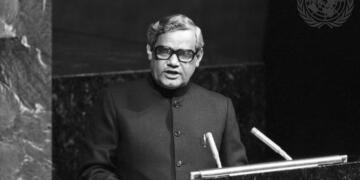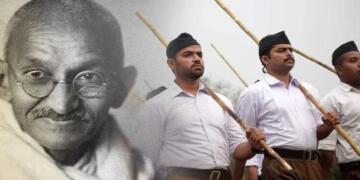With the countdown to the 2025 Bihar Assembly elections underway, the political arena is witnessing early but intense action. The National Democratic Alliance (NDA) — led by the BJP and JDU — has unveiled a distinct campaign strategy centered on the ‘M’ factor: Mahila (women), Mandir (temple), and Modi. This MMM formula, as insiders describe it, is shaping up to be the NDA’s central narrative in the state’s upcoming political battle.
By combining cultural symbolism, targeted welfare politics, and the enduring popularity of Prime Minister Narendra Modi, the alliance is trying to craft a high-emotion, high-recall campaign designed to appeal across social and caste divides.
Poll Clock Ticks: Why Bihar Matters Beyond Patna
The Bihar Assembly elections are due in October–November 2025, as the tenure of the current 17th Assembly ends in November. With 243 seats at stake, any alliance will need at least 122 seats to form a government. But beyond the numbers, Bihar remains a politically pivotal state — a litmus test of public mood in eastern India and often a bellwether for national narratives.
The 2025 elections carry additional weight because of recent realignments. Nitish Kumar’s return to the NDA in 2024 — after briefly siding with the INDIA bloc — has redrawn the political map. For both alliances, Bihar is not just a regional contest but a staging ground for the ideological and electoral battles leading up to the 2029 Lok Sabha polls.
Women in Focus: NDA Eyes the Silent Electoral Force
Among the most important pillars of the NDA’s strategy is the female electorate — a demographic that has repeatedly played a decisive role in Bihar. NDA leaders believe that women voters, particularly in rural areas, have remained a loyal support base due to past welfare schemes on health, education, and prohibition.
To consolidate this support, the NDA is expected to launch a series of fresh welfare announcements focused on safety, livelihood, and empowerment. These will likely be rolled out in phases to maintain visibility through the campaign cycle. With Nitish Kumar’s legacy on women-centric governance and Modi’s branding power, the alliance hopes to maintain a strong edge.
Mandir Narrative: Cultural Connect with a Political Purpose
In a move to tap into religious sentiment and reinforce cultural pride, the NDA has announced the construction of a grand Sita temple in Sitamarhi, a place deeply associated with Goddess Sita in Hindu mythology. The project, with its design already unveiled by CM Nitish Kumar, is a strategic attempt to blend devotion with regional pride.
This Bihar-specific religious plank is being seen as a counterweight to the broader Ayodhya Ram Mandir narrative, giving voters a culturally rooted reason to identify with the NDA. It also seeks to resonate with both spiritual voters and those who view temple-building as symbolic of Hindu resurgence.
Modi Factor: Leadership Branding Across the Map
At the heart of the NDA campaign remains Prime Minister Narendra Modi, whose popularity continues to anchor the BJP’s electoral fortunes. Between July 15 and September 15, Modi is scheduled to hold rallies across all nine administrative divisions of Bihar. He has already addressed massive gatherings in Madhubani, Bikramganj, and Siwan — with more than ten additional visits planned.
This ground-level engagement is designed not only to energize the base but also to frame the election as a leadership choice — turning regional voting into a referendum on Modi’s vision and credibility. This has been the BJP’s consistent formula since 2014: local issues filtered through the lens of central leadership.
Opposition’s Pushback: ‘Beti Ka Bhavishya’ and Development Pitch
Sensing the NDA’s aggressive outreach, the opposition INDIA alliance, led by RJD and Congress in Bihar, has crafted its own counter-strategy. Under the ‘Beti Ka Bhavishya’ (Daughter’s Future) campaign, the alliance is promising 50% reservation for women in government jobs, free scooters for female students, and a girl child safety fund.
The INDIA bloc is framing the MMM campaign as a distraction tactic — designed to divert attention from economic issues like joblessness and rising prices. Leaders like Tejashwi Yadav are not only pushing welfare proposals but also attempting to shed the long-standing criticism of “jungle raj” associated with the RJD’s earlier rule.
Clash of Visions: Identity vs. Issues
What’s unfolding in Bihar is more than just a political contest — it’s a narrative clash. The NDA is banking on an emotional and symbolic campaign that fuses cultural pride, gender empowerment, and personality politics. Meanwhile, the INDIA bloc is anchoring its appeal in economic realities and social welfare.
The core question is this: Will Bihar’s voters lean toward Modi’s charisma, temples, and targeted schemes, or will they resonate more with opposition promises of jobs, justice, and inclusive governance?
Whichever way the verdict goes, one thing is clear — Bihar 2025 will set the tone for India’s broader political discourse in the years to come.


